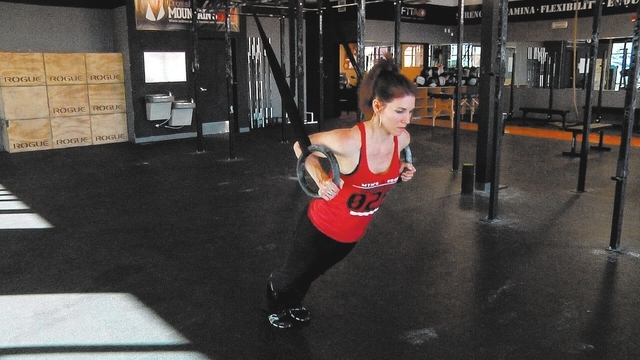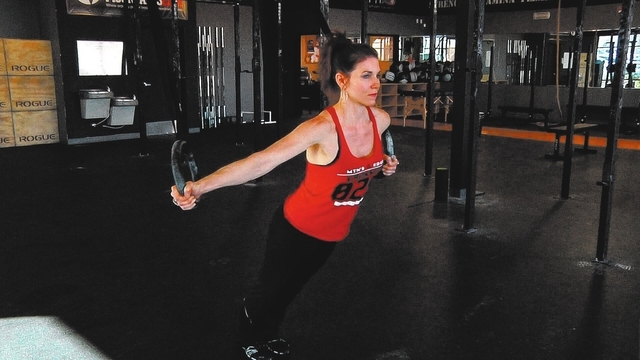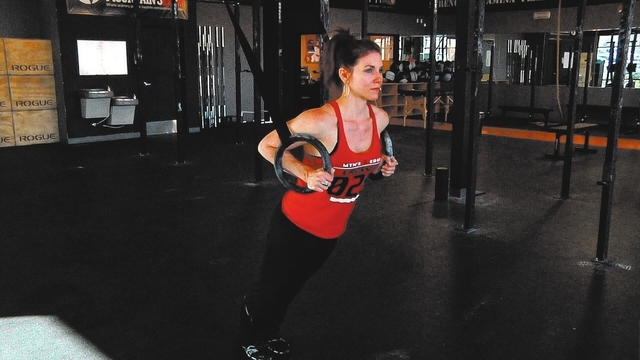Hang tough: Suspension trainers work many muscles




Sore for days. My first day using a suspension trainer seemed easy until I tried to roll out of bed the next day.
My “everything” hurt. My core felt the most sore. The soreness lasted for about a week. I guess I wasn’t used to activating my core like the suspension trainer requires.
Not everyone is that sore after one workout on the suspension trainer. My first day happened to be an eight-hour instructional course. It involved learning dozens of movements along with their progressions and regressions. The instructor also ran us through three benchmark workouts.
A suspension trainer is not a person; it is an adjustable strap system with handles. You can work the upper and lower body with fast transitions and no weight to load. You are the machine as well as all the resistance you will need.
Suspension trainers are growing more popular in gyms. You may even see the signature gray TRX rig that looks like scaffolding in your gym. Some gyms require you to check out the black and yellow, adjustable bands while others have them hanging for open use.
Suspension trainers come in many forms. They look similar, but their features vary. Some have one kind of adjuster while others have a different type of handle. You can even use Olympic gymnastic rings to perform suspension exercises. Olympic rings are my favorite. I have even seen instructions on how to make your own for around $20 from materials at the hardware store.
You can find them online and at most sporting goods stores. Prices are positively correlated with quality. I recommend using your gym’s suspension equipment: It is cheaper and easier than making your own.
Whichever suspension trainer you choose, the principles are the same. Your body is the machine and the plank is the default position for most exercises. This is how your body becomes the machine. You hold part of it still (the core), while another part moves (the limbs and/or hip).
As a trainer, I like using suspension to drill how important the posterior chain is for movement. The glutes, core and back are major engines tuned for stability and movement. With suspension training you feel them all. If one of those areas gets lazy, you can easily see it by the way a person moves.
Take today’s suspension pushup exercise for example. In most floor version pushups, the principle of torque is lost; there is no external rotation of the shoulder capsule to put it in a safe and stable position. It becomes easy for the shoulder to take over most of the pectorals’ and triceps’ work. From there, you could even develop a viral movement pattern that can carry over to other areas. Trainers and athletes can miss this with the traditional pushup.
The suspension pushup requires the handle or rings to be externally rotated as a part of stability and thus it carries over throughout the entire movement. If that outward rotation is lost, the shoulders ache, the upper back rounds and the core stability falls apart obviously. All because of a few degrees of tension in the shoulder capsule.
Suspension pushups are also going to be triceps-dominant because the hands are close to the body. This helps maintain healthy shoulders and develop strength in the chest and triceps.
A chest press also enables depth training. Since there is no floor under the hands, just air, lifters can use this exercise to train pressing below the chest level for a more dynamic movement.
Suspension trainers are, in trainer lingo, an unstable and controllable environment. This translates to strong and stable joints because the body is forced to stabilize more than on a traditional sit-down machine at the gym.
Suspension exercises are easy to progress and regress — just step forward or backward. The less bodyweight you have on the suspension trainer, the less your muscles work. This principle comes in handy for the other suspension exercise featured today, reaches. Reaches are a potent exercise. Start off almost standing up and slowly progress to a lower position by stepping backward. Reaches are a gymnastic drill to help build a strong rotator cuff. No lifting here, just unadulterated stability
Chris Huth is a Las Vegas trainer and can be contacted at 702trainer@gmail.com. No press releases please. Before beginning any exercise program, consult your physician.












